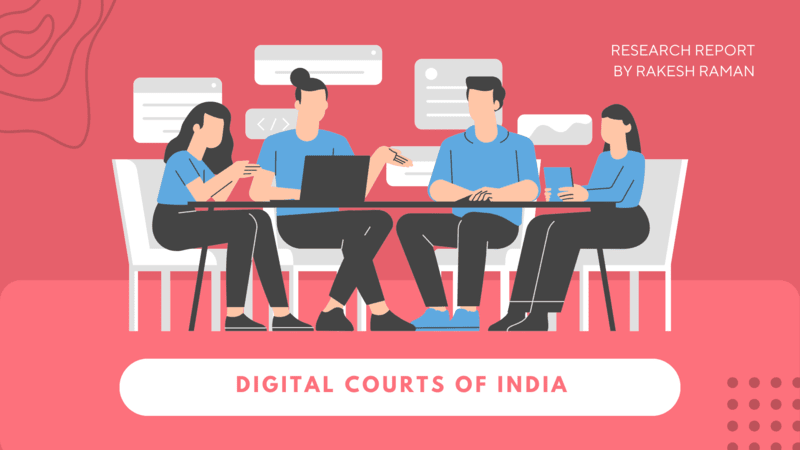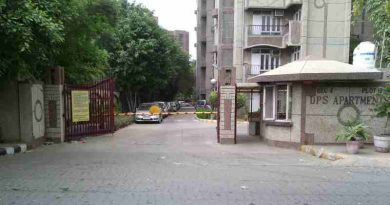Status of Indian Judiciary and Plans of Using Technology In Courts

Status of Indian Judiciary and Plans of Using Technology In Courts
A new research report “Decayed Digital Courts of India” highlights the official plans of the Supreme Court of India to introduce technology in the judicial processes. The excerpts from the report are given below.
STATUS OF INDIAN JUDICIARY
Global research reports reveal that the Indian judiciary and judicial systems are not fully developed as the lawyers as well as judges are not quite qualified to handle court cases professionally. While the Supreme Court judges behave erratically and their judgments are not consistent with the established tenets of law, the situation is worse in high courts and lower courts.
According to the latest 2023 Rule of Law Index of the World Justice Project, India’s score declined from 0.50 in 2022 to 0.49 in 2023 and India ranked 79th across 142 countries in 2023 while the civil and criminal justice systems in the country are on the verge of collapse. The Index shows that India’s justice delivery performance is worse than even very small or developing countries such as Ghana, Indonesia, Jordan, Malaysia, Nepal, South Africa, and Sri Lanka.
It is being observed that most members of the judiciary do not possess even basic knowledge to work in courts and they are unprofessional in their conduct. While judges have limited knowledge of law and decide the cases randomly based on their whims, the judges (as well as lawyers) are not quite comfortable using English in their official work because they lack English language skills. You can click here to download and read a related report: “Risks of English Language Limitations in Indian Judiciary.”
Since Indian lawyers and judges are working in a casual, free-wheeling manner, the Indian legal system is plagued by random judgments and long delays. The introduction of technology can overcome the problem of unprofessionalism in judicial services by reducing the human intervention in court cases. But the technology usage is negligibly low and the digital courts are not functioning at all because India is one of the most backward nations in terms of technology adoption.
PLANS OF USING TECHNOLOGY IN COURTS
The Supreme Court of India has observed that it is the fundamental right of litigants to have technology as an option to contest their legal cases. The e-Courts mission mode project spearheaded by the e-Committee of the Supreme Court aims to transform the Indian judiciary by introducing information and communications technologies (ICTs) in all courts.
The objective of the e-Courts project is to introduce paperless courts which means from presentation of a plaint or petition till its disposal and archival no paper should be used. In paperless courts all the pleadings, evidence, orders, and judgments are documented and archived on digital media.
This would include digitization of decided or pending cases, indexation of such digitized records on key parameters for easy retrieval, authentication of digitized records and simultaneous weeding out of paper records and digitization of current files and simultaneous introduction of e-filing options.
The project also specifies that the entire records of the cases listed before the e-Courts should be digitized and transferred into digital portfolios in PDF (Portable Document Format) files. A large sized monitor, with an interactive touch screen has been provided on the dais of the judge. It displays the list of cases to be heard on a particular day. By ‘touching’ the case number or name as appearing on the screen, the judge can have the entire digital portfolio on the computer screen divided into different folders.
All these plans to introduce technology in courts are quite commendable, but the judicial workforce – including judges, lawyers, and court staff – are not yet ready to embrace tech systems. In other words, the technology plans have not improved the quality of justice because the judiciary is not trained to use technology. Since there is no judicial accountability, the judges in the Supreme Court, high courts, and lower courts take random decisions without any application of law.
For example, if you evaluate the judgments of the Supreme Court through an Artificial Intelligence (AI)-based expert system, you will find that almost all the judgments, dismissal of petitions, or delays in decisions are either wrong or biased in favour of the regime. The situation is worse in high courts and lower courts where judges are almost illiterate and uncivilized. You can click here to download and read Research Paper: 20 Bitter Truths in the Indian Legal System.
The judges – particularly of the Supreme Court – deliver weekend academic lectures on constitution, democracy, and justice. But they do not practice in courts what they preach in their academic discourse. All that they say is meaningless rhetoric because when they sit in their courts as judges, they leave no stone unturned to crush democracy and violate all norms of the constitution.
It has been seen in multiple cases during the past few years. The judges in high courts and lower courts are so naive that they cannot even deliver lectures on law and justice while their court decisions are mostly wrong.
As the justice delivery systems have become defunct, nearly 1.4 billion Indians are suffering under unprecedented poverty, corruption, inflation, unemployment, lawlessness, and religious animosity. Worse, more than 800 million (80 crore) Indians are so poor that they cannot afford even two square meals a day. That is why they are just surviving on state dole and poverty is still increasing in the country.
While it is the basic responsibility of the courts to deliver visible justice, they fail repeatedly. As the courts and judges are also inefficient and lack professional skills, they keep sitting on cases while the commoners are suffering. Consequently, about 5 crore (50 million) cases are now pending in various Indian courts. Out of these, nearly 70,000 cases are pending in the Supreme Court, about 60 lakh (6 million) cases are pending in high courts, and others are in the lower courts.
Although poor quality of education in law schools and universities, ignorance of lawyers and judges, and corruption in judiciary are among the reasons for the constant deterioration of the justice delivery system in India, the aversion to the use of technology is also a painful irritant.
The 23-page PDF report is given below. You can also click here to download the report.
Contact
Rakesh Raman
Editor, RMN News Service [ Website ]
Founder, RMN Foundation [ Website ]
463, DPS Apts., Plot No. 16, Sector 4
Dwarka, Phase I, New Delhi 110 078, India
WhatsApp / Mobile: 9810319059 | Contact by Email
Donation: Individual donors can click here to donate online and click here to pay with PayPal.






